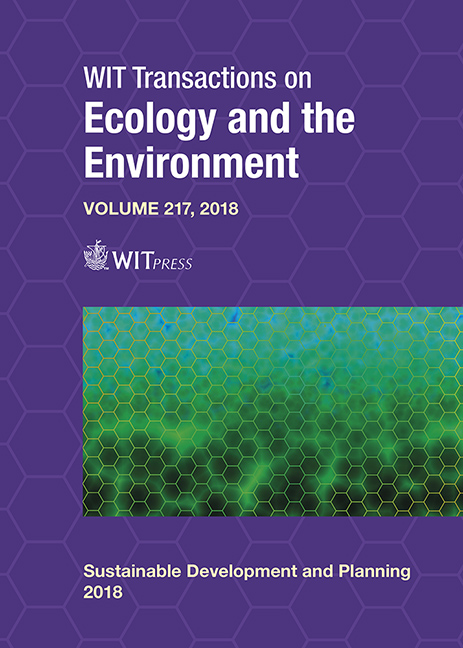SURVEY OF INORGANIC COMPONENTS IN ATMOSPHERIC PARTICLES OF THREE URBAN AREAS CAUSED BY WINTER ENERGY CONSUMPTION IN CHINA AND JAPAN
Price
Free (open access)
Transaction
Volume
217
Pages
11
Page Range
469 - 479
Published
2018
Size
471 kb
Paper DOI
10.2495/SDP180421
Copyright
WIT Press
Author(s)
QINGYUE WANG, WEIQIAN WANG
Abstract
Today, countries around the world are continuing to advance economically, putting a great strain on the ability of the natural environment to process the high level of pollutants being created. In recent years, the increase in fossil fuel consumption, especially in China, is significant, due to advancing economic development. Air pollution, such as suspended particle matter emitted from anthropogenic sources, has already become a serious regional problem for the urban environment, and could be an important inhibitory factor for sustainable development. In this paper, the atmospheric inorganic compositions of three urban areas – Saitama city in the Tokyo metropolitan area, Nagasaki city in Japan and Shanghai metropolitan area in China – were determined during the winter of 2015. The results showed that water-soluble components such as sulfate ion (SO42–), nitrate ion (NO3–) and potassium ion (K+), as secondary particles of anthropogenic combustion sources, increase in the order of Shanghai > Nagasaki > Saitama, and are several times higher in Shanghai compared with those of the other sampling sites. It was confirmed that serious air pollution events create nitrogen oxides, and sulfur oxides are caused by fossil fuel consumption. It might be possible that the urban air pollutants of fossil-fuel-burning sources were transported to Japan by “long-range transportation”. As we can see from the analytical results from the Shanghai urban area, the main source of anthropogenic pollution is commonly the exhaust emitted from motor vehicles. However, trace elements such as arsenic (As), selenium (Se), vanadium (V) and nickel (Ni) of coal and petroleum oil combustion were higher in the Nagasaki urban area than in the Saitama urban area. It was indicated that the urban air pollution in Shanghai, due to the presence of inorganic components caused by seasonal energy consumption, were much higher than in Japan during the winter sampling periods. It could be considered that the air pollutants were transported to Japan via long-range transportation. According to these experimental findings, it is evident that China’s energy structure requires improvement if progress is to be made in sustainable development.
Keywords
sustainable development, inorganic components, suspended particle matter, energy combustion, Shanghai, China, Nagasaki, Saitama, Japan





